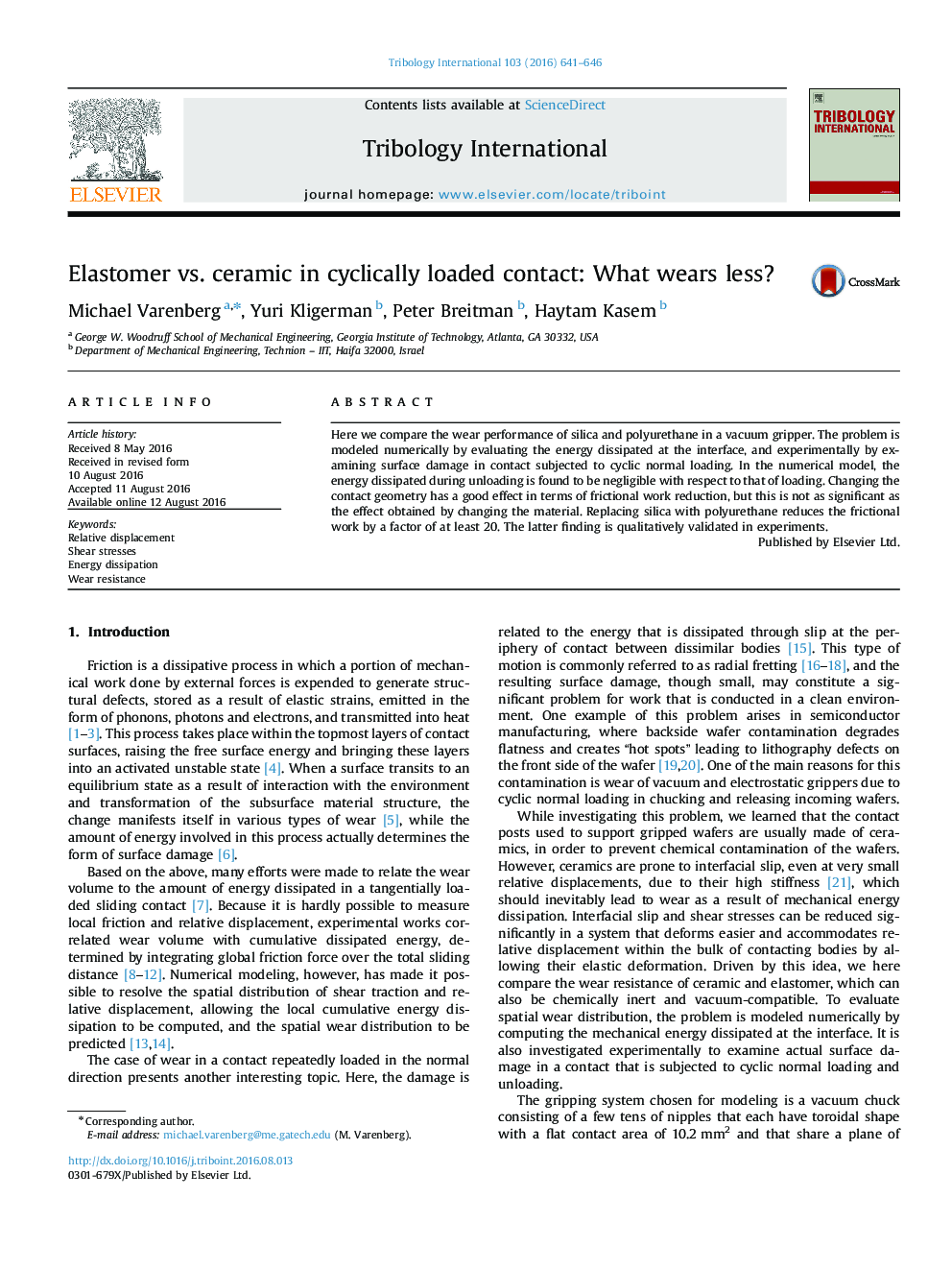| Article ID | Journal | Published Year | Pages | File Type |
|---|---|---|---|---|
| 7002420 | Tribology International | 2016 | 6 Pages |
Abstract
Here we compare the wear performance of silica and polyurethane in a vacuum gripper. The problem is modeled numerically by evaluating the energy dissipated at the interface, and experimentally by examining surface damage in contact subjected to cyclic normal loading. In the numerical model, the energy dissipated during unloading is found to be negligible with respect to that of loading. Changing the contact geometry has a good effect in terms of frictional work reduction, but this is not as significant as the effect obtained by changing the material. Replacing silica with polyurethane reduces the frictional work by a factor of at least 20. The latter finding is qualitatively validated in experiments.
Related Topics
Physical Sciences and Engineering
Chemical Engineering
Colloid and Surface Chemistry
Authors
Michael Varenberg, Yuri Kligerman, Peter Breitman, Haytam Kasem,
